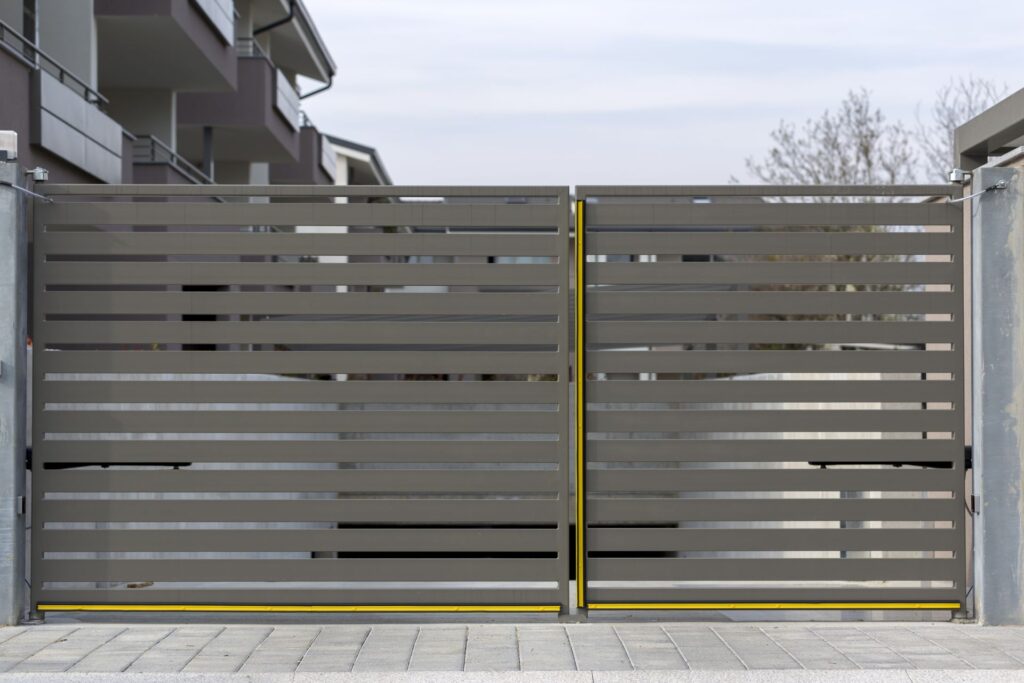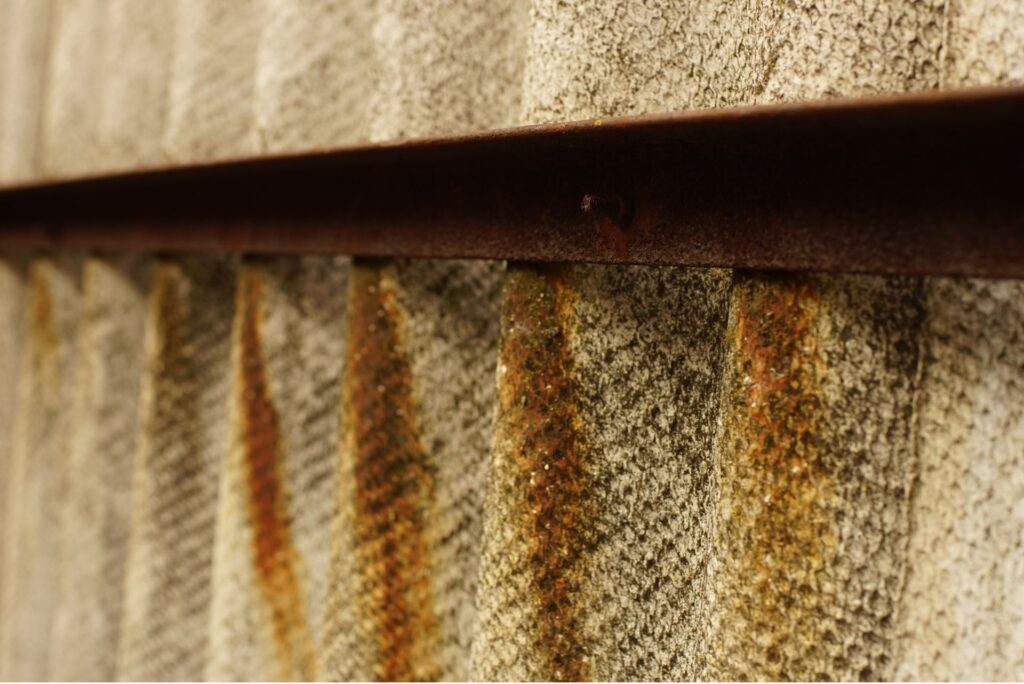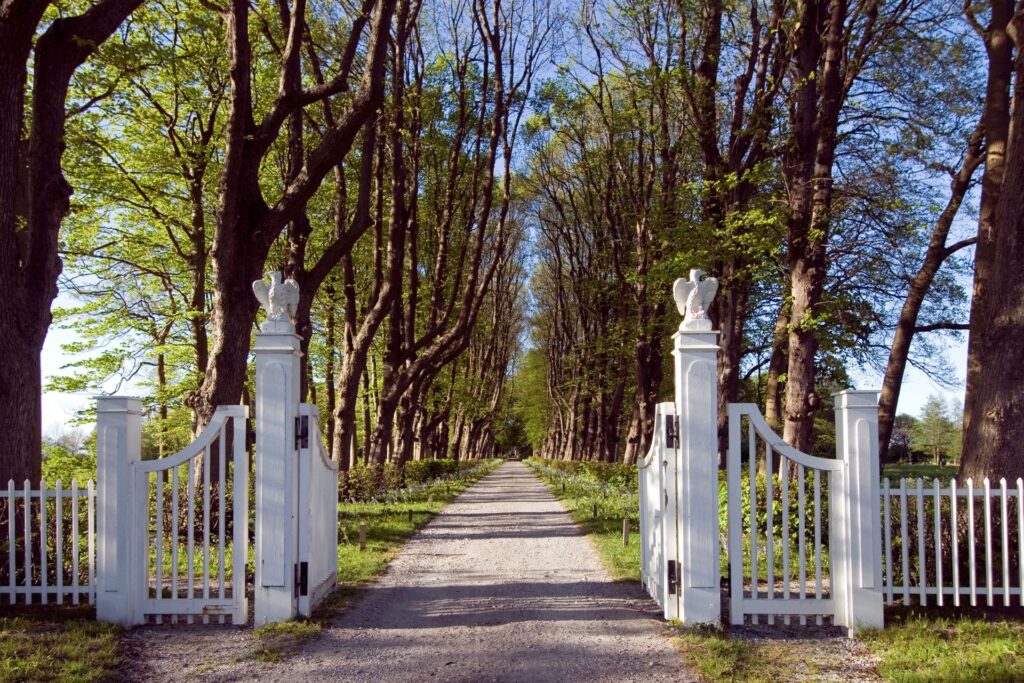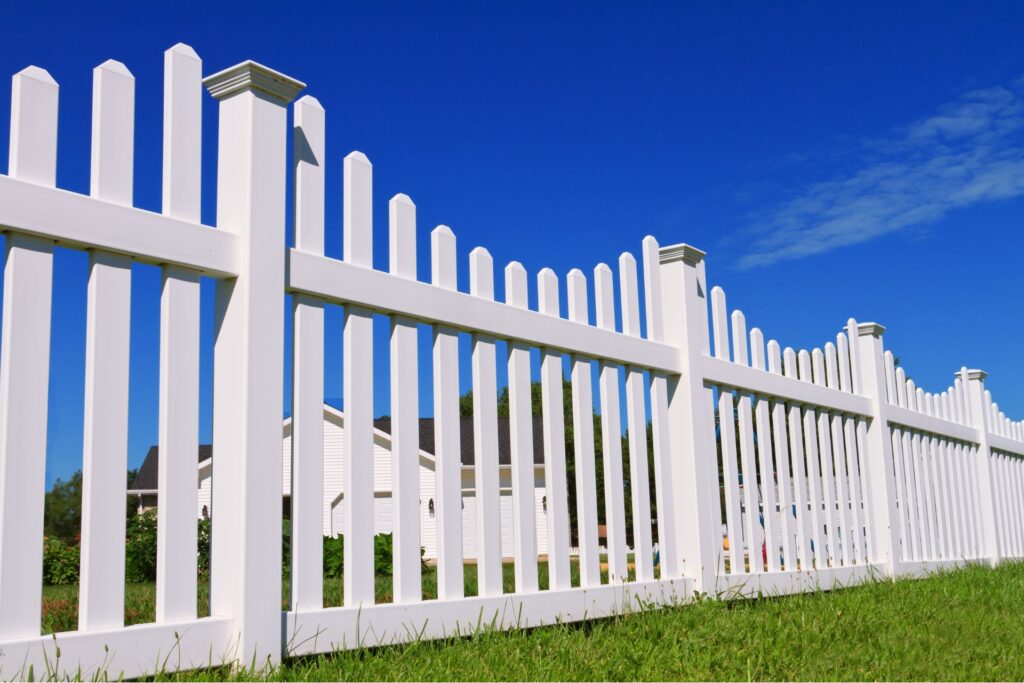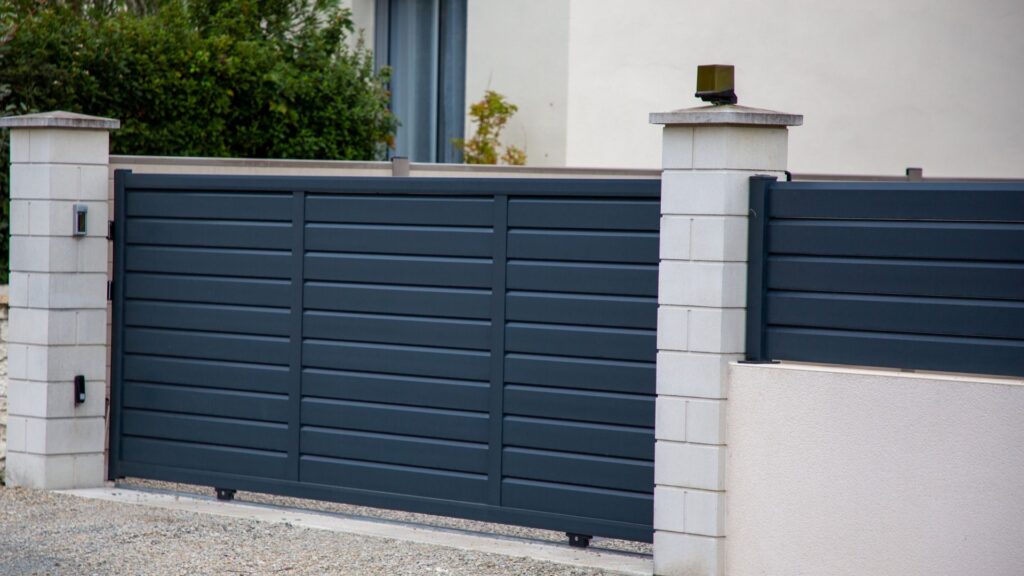Welcome to our comprehensive guide on a question many homeowners ask: “Can I paint my side of my neighbor’s fence?” Whether you’re trying to spruce up your garden or simply add a personal touch to your outdoor space, knowing the rules and etiquette around fence modifications is essential. In this article, we’ll walk you through everything you need to know about fence ownership, legal considerations, and how to approach your neighbor with respect. Plus, we’ll share some creative alternatives if painting isn’t an option and provide practical tips for maintaining good neighborly relations while achieving the garden look you desire.
Yes, you can paint your side of your neighbor’s fence, but it depends on who owns the fence and the local laws. If the fence belongs to your neighbor, you must seek their permission before making any changes. Without their consent, altering the fence could lead to disputes or legal consequences. Always check property boundaries and local regulations before proceeding, and maintain open communication with your neighbor to avoid conflicts.
Table of Contents
Understanding Fence Ownership
When it comes to determining who owns a fence, the details matter not only for maintaining good neighborly relations but also for legal purposes. This guide will explore how to identify fence ownership, differentiate between shared and private fences, and understand why knowing this is crucial before making any modifications.
Who Owns the Fence?
Fence ownership can sometimes be straightforward, but often it requires a bit of detective work. The first step in determining who owns the fence is to check the property lines. This information can typically be found on your house’s deed, a detailed diagram available at your local land registry office, or through a professional surveyor. If the property lines aren’t clear or if the fence sits directly on the line, you may need to consult any existing agreements or deeds that detail the responsibilities for maintenance or ownership.
In some cases, the fence might belong solely to your neighbor. However, many fences are considered boundary fences and are therefore shared by neighbors. This shared ownership usually implies that both parties are responsible for the maintenance and upkeep of the fence. Keywords like “fence ownership rules” are often searched by homeowners who are trying to figure out whether the fence is theirs alone to manage, or if it’s a shared asset.
What’s the Difference Between Shared and Private Fences?
Understanding the distinction between shared and private fences is critical. A shared fence, also known as a boundary fence, is erected on the property line between two properties. This means that both homeowners own the fence equally and share the responsibility for it. Such arrangements typically require mutual agreement before any changes can be made, including repairs, painting, or replacement.
On the other hand, a private fence is located entirely on one property and is owned by that property owner alone. This type of fence gives the owner the autonomy to make decisions regarding the fence without needing consent from the neighbor, provided all local regulations are followed.
Why Ownership Matters Before Painting
Before you decide to paint or make modifications to a fence, understanding its ownership is essential. If it’s a shared fence, both parties need to agree on the color, timing, and method of painting. This agreement helps avoid disputes and ensures that both parties are satisfied with the outcome. For private fences, while the owner may have the liberty to choose the paint and style, it’s always a good idea to inform the neighbors of upcoming work as a courtesy.
Determining fence ownership and understanding the type of fence you have helps in making informed decisions about maintenance and modifications. Whether it’s shared or private, good communication with your neighbor can lead to a harmonious outcome that respects both parties’ interests and property rights.
By familiarizing yourself with “fence ownership rules,” you not only adhere to legal standards but also foster better relationships with those living around you. It’s always better to proceed with knowledge and respect, ensuring that any changes to fences are made with proper agreement and understanding.

Legal Considerations: What The Law Says
When considering giving your fence a fresh coat of paint, it’s essential to step back and review the legal landscape surrounding this seemingly simple act of home improvement. Understanding the legalities before dipping your brush can save you from potential disputes and fines. This article delves into the legal considerations you should be aware of, particularly focusing on the question, “Is it legal to paint your side of the fence?”
Is It Legal to Paint Your Side of the Fence?
The legality of painting your fence varies significantly depending on where you live. Different regions and countries have distinct regulations governing such modifications to shared or boundary structures.
Regional Variations in Fence Painting Laws
In places like the United States, the United Kingdom, and Australia, laws can differ greatly even within the same country:
- United States: Generally, if you share a boundary fence with a neighbor, you might need their permission to paint your side, especially if the neighbor paid for the fence. Some localities have specific ordinances that must be adhered to, so checking with your municipal or county government is advised.
- United Kingdom: In the UK, the ownership of the fence is typically indicated by the positioning of the fence posts. If the posts are on your side, you likely own the fence and can paint it as you wish. However, if the fence is shared or the posts are on your neighbor’s side, you’ll need their consent.
- Australia: Similar to the UK, fence ownership in Australia can usually be determined by the position of the posts. Local council regulations might also influence what alterations can be made, so it’s crucial to check these before proceeding.
Common Legal Principles
Most commonly, the fundamental principle is that if your neighbor owns the fence outright, you will need their permission to make changes, including painting. This is because the physical structure, while bounding both properties, is legally their property.
Examples of Legal Consequences
Altering a fence without the proper permissions can lead to various legal consequences. These might include:
- Disputes: Painting a fence without agreement can lead to disputes with neighbors, which could sour relations or even lead to mediation or court cases to resolve property boundary issues.
- Fines: In some jurisdictions, unauthorized modifications to a boundary structure like a fence can result in fines from local authorities, especially if the alteration violates local codes or regulations.
Important Tip: Consultation is Key
Before you decide to paint your fence, the most reliable course of action is to:
- 1. Check local regulations: This ensures that any modifications you plan are in line with local laws and neighborhood agreements.
- 2. Talk to your neighbor: If there’s any uncertainty about who owns the fence, or even as a gesture of good will, discussing your plans with your neighbor can prevent future disputes.
- 3. Consult a legal professional: For absolute clarity on what you can and cannot do, speaking to a legal professional familiar with property laws in your area can be invaluable.
By keeping these considerations in mind and ensuring all legal bases are covered, you can confidently go ahead with painting your fence, ensuring it enhances both your property’s aesthetic and value without leading to legal headaches. This mindful approach not only respects legal boundaries but also fosters good neighborly relations, making your home improvement project a success on all fronts.

Neighborly Etiquette: How To Approach The Conversation
When it comes to maintaining harmony and good relations in our neighborhoods, how we communicate with our neighbors can make all the difference. Whether it’s discussing property boundaries, shared spaces, or community projects, approaching these conversations with tact and understanding is key. Here’s a detailed guide on how to effectively engage with your neighbors to foster a cooperative and friendly community atmosphere.
Starting a Friendly Conversation
Initiating a dialogue with your neighbor doesn’t have to be daunting. The goal is to approach your neighbor in a respectful and collaborative manner, setting the stage for a positive interaction. Here are some tips on how to start the conversation right:
- Choose the Right Time and Place: Consider approaching your neighbor at a time when they aren’t busy or in a rush. A casual setting, perhaps while both of you are in your yards, can make the interaction more relaxed and natural.
- Be Friendly and Open: Start with a friendly greeting and perhaps a compliment or a comment on something you both relate to, like the weather or a recent community event. This can help break the ice and make the conversation more amenable.
- Express Your Intentions Clearly: Once the small talk is out of the way, clearly explain why you’re initiating the conversation. Whether it’s a new fence, tree planting, or any other joint effort, being upfront about your intentions can prevent any misunderstandings.
Offer a Win-Win Proposal
When proposing a project or solution that involves your neighbor, framing it as a win-win scenario can significantly increase the chances of a positive response. Here’s how you can make your proposal appealing:
- Highlight Mutual Benefits: Share how the proposal could benefit both parties. For instance, if you’re suggesting planting a new hedge, explain how it could enhance privacy and aesthetics for both properties.
- Consider Cost Sharing: If the project involves costs, such as building a shared fence, propose a fair split. This shows consideration and willingness to cooperate, making the proposal more attractive.
- Be Flexible and Open to Input: Allow room for your neighbor to provide feedback and suggest changes. This not only makes the proposal collaborative but also increases the likelihood of agreement.
Handling Potential Objections
Despite your best efforts, there’s always a chance your neighbor may not be keen on your idea. Here’s how to handle any objections gracefully:
- Listen Actively: If your neighbor raises concerns, listen carefully without interrupting. Understanding their perspective can help you address their concerns more effectively.
- Respond with Empathy: Acknowledge their feelings and express understanding. For example, if they are worried about the cost, discuss potential ways to reduce expenses or adjust the project scope.
- Stay Civil and Respectful: If the answer is a firm “no,” respect their decision. Staying courteous maintains a good relationship, leaving the door open for future discussions.
By following these guidelines, you can approach neighborly conversations with confidence and civility, fostering a sense of community and cooperation. Whether the outcome is a successful collaboration or a respectful disagreement, handling these interactions with care ensures a harmonious neighborhood environment.

Alternatives To Painting The Fence
When it comes to personalizing the boundary lines of your property, many homeowners consider painting their fence as a primary option. However, what do you do when your neighbor isn’t on board with your vision? Whether due to differing tastes or other concerns, if you find yourself at a standstill with a neighbor who says no to painting, there are several creative alternatives to painting a fence that can transform your outdoor space while keeping the peace.
1. Installing Your Own Fence
One straightforward solution is to install a new fence on your property, just inside the existing boundary line. This approach allows you to have full control over the fence’s appearance without altering the existing structure. Whether you choose a wooden, vinyl, or metal fence, this option ensures that you can apply any color or design that reflects your style.
2. Personalizing with Decorations and Plants
If installing a new fence is not feasible, consider personalizing your side of the fence with various decorations and plants. Hanging decorative items, like outdoor wall art or festive lights, can add a touch of personality without needing a single stroke of paint. Additionally, arranging tall plants or constructing a vertical garden can create a natural, living barrier that enhances both privacy and aesthetic appeal.
3. Creative Solutions with Hanging Decorations and Outdoor Art
Expanding on the idea of decorations, using hanging decorations and outdoor art offers a way to beautify your fence without permanent changes. Items such as wind chimes, metal wall sculptures, or weather-resistant paintings can provide visual interest and a personal touch. This method is particularly effective for renters or those looking for less permanent solutions.
4. Utilizing Vines and Natural Elements
Another enchanting alternative involves the use of climbing vines or other foliage to naturally decorate the fence. Plants like ivy, clematis, or jasmine not only add lush greenery and blooms to your garden but also help in creating a more intimate and private outdoor space. This option can be especially appealing if you enjoy gardening and prefer a more organic approach to fence decoration.
5. Incorporating Fence Coverings
For those looking for temporary or seasonal changes, adding fence coverings like bamboo screens or fabric panels can be an excellent choice. These materials can be easily attached and removed without damaging the underlying fence, offering flexibility in design and coverage. Fence coverings are ideal for renters, those in HOA-regulated homes, or simply anyone who wishes to change their backyard’s look with the seasons.
Exploring alternatives to painting a fence can open up a myriad of possibilities to enhance and personalize your outdoor living space. Whether you opt for a completely new fence, creatively use plants and decorations, or install temporary coverings, these options provide aesthetic solutions that respect both your and your neighbor’s property rights. Remember, each option comes with its own set of considerations regarding cost, permanence, and maintenance, so choose what best fits your lifestyle and budget. By embracing these creative solutions, you can achieve a beautifully personalized space that reflects your unique style and respects the boundaries of neighborly agreement.

How To Paint Your Side (If You Get Permission)
When it comes to enhancing the appearance of your home’s exterior, painting your fence is a cost-effective and transformative solution. If you’ve obtained permission to paint your side of the fence, following a structured approach will ensure a professional-looking finish. Here’s a detailed guide on how to paint a fence, incorporating essential steps, tips, and materials needed for the project.
Step-by-Step Guide to Painting Your Side
Preparation
The key to a successful paint job is in the preparation. Start by cleaning the surface thoroughly; this means removing any dirt, debris, or peeling paint. For wooden fences, use a stiff brush and soapy water or a wood cleaner to ensure the surface is pristine. If dealing with a metal fence, you might need to remove rust with a wire brush or sandpaper and apply a rust-inhibitor before painting.
Selecting the right paint is crucial. For wooden fences, choose a paint that’s designed for exterior wood; these are usually moisture-resistant and contain additives to prevent mold and fading. For metal fences, opt for a paint specifically formulated for metal, which will adhere better and help prevent rust.
Materials Needed
Here’s a quick rundown of what you’ll need to paint your fence:
- Sandpaper or a wire brush (for prepping the surface)
- Primer (if necessary, depending on the material of the fence and type of paint)
- Quality exterior paint in your chosen color
- Paintbrushes and rollers
- Painter’s tape (to protect areas you don’t want painted)
- Drop cloths (to protect the ground from drips)
- A step ladder, if necessary
Tips for A Beautiful Finish
Color Selection
Choosing the right color can make a significant difference. Opt for neutral colors that complement the colors of your garden and house, while also considering what won’t clash with your neighbor’s side. Neutrals like greens, grays, or browns tend to blend harmoniously with outdoor environments.
Best Practices for Applying Paint
To achieve a beautiful finish, apply paint on a dry day when it’s not too hot or cold, which can affect how the paint dries. Start from the top of the fence and work your way down to prevent drips from ruining your finish. Use a brush to get into nooks and crannies and a roller for larger flat areas. Apply at least two coats for a uniform and durable finish.
Maintaining your painted fence is also important. Check annually for any chips or wear and touch up as needed to keep your fence looking fresh and to extend the life of the paint job.
Incorporating these tips into your fence painting project not only enhances the curb appeal of your property but also protects your investment by extending the life of the fence. Whether you’re updating an old fence or adding a personal touch to a new one, the right approach can make all the difference. Remember, the keyword here is “how to paint a fence”—an essential skill for any DIY enthusiast looking to improve their home’s exterior on their own.
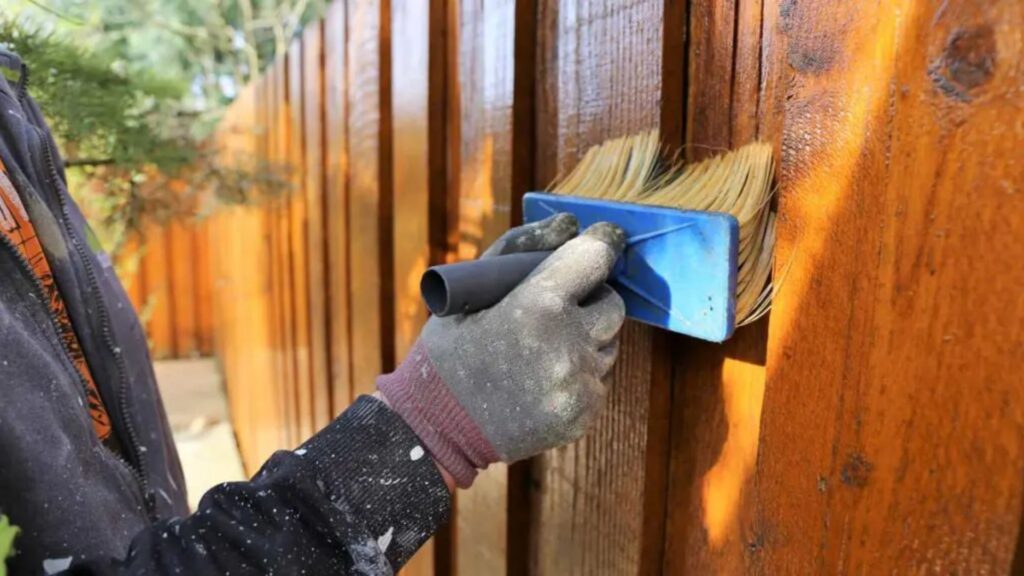
Preventing Future Issues
Building and maintaining a good relationship with your neighbors is crucial, especially when it comes to managing shared spaces and boundaries, such as fences. Here are some proactive steps you can take to prevent future issues and maintain a harmonious environment in your neighborhood.
Clear Communication and Boundaries
Avoiding Disputes Over Future Changes
Open and transparent communication is the cornerstone of any good neighborly relationship. Before making any changes to shared spaces or boundaries, it’s important to discuss your plans with your neighbors. This could involve anything from renovations that might affect the shared fence line to changes in landscaping that might encroach on their space. Here are a few tips to keep in mind:
- Initiate the Conversation Early: As soon as you start planning, bring your neighbors into the loop. This gives them time to consider the changes and provide feedback, which can help avoid last-minute disagreements.
- Be Considerate of Views and Privacy: When planning changes, consider how they might impact your neighbor’s view and privacy. Try to find a solution that respects both parties’ interests.
- Use Visuals: Sometimes, explaining your plans verbally isn’t enough. Consider using diagrams or even digital mockups to help your neighbor visualize the changes. This can help clarify your intentions and prevent misunderstandings.
Setting Up Clear Guidelines with Your Neighbor
To further prevent disputes, it’s beneficial to set up clear, written agreements or guidelines regarding the maintenance and alteration of shared boundaries or spaces. This could include:
- Boundary Agreements: Define and agree on where each person’s property begins and ends. This might include a survey if boundaries are unclear.
- Maintenance Responsibilities: Agree on who is responsible for maintaining which parts of the boundary, such as fencing or landscaping.
- Process for Future Changes: Establish a procedure for discussing and approving future changes. This might include agreements on how to share costs for boundary improvements.
Regular Maintenance
Keeping Your Side of the Fence in Good Condition
Regular maintenance of your property, especially areas that affect your neighbors, is essential for preventing long-term disputes. Here are some aspects of maintenance that you should regularly check:
- Fence Integrity: Regularly inspect and repair any damage to fences. This prevents issues from escalating and shows that you take the shared boundary seriously.
- Overgrowth Control: Keep trees, bushes, and other plants trimmed so they don’t encroach on your neighbor’s property or damage the fence.
- Cleanliness and Aesthetics: Maintain the cleanliness and appearance of your property. A well-kept space not only enhances the neighborhood but also reduces the likelihood of complaints.
By following these steps, you can ensure that your relationships with your neighbors remain positive and that any potential disputes are minimized. Regular communication and maintenance go a long way in preventing future issues and fostering a friendly, cooperative neighborhood environment.

When To Seek Professional Help
When it comes to home improvement or property development projects like installing or repairing a fence, it’s important to know when you can DIY and when it’s time to call in the experts. Especially in cases where the project involves legal boundaries or neighborly disputes, professional assistance can be invaluable. Below, we discuss two key scenarios where seeking professional help is advisable.
Mediation for Disputes
Disagreements between neighbors over property boundaries or fence responsibilities can escalate quickly. If you find yourself in a conversation about fencing that turns into a disagreement, it might be time to consider mediation. Mediators are professionals trained to facilitate negotiations and help all parties involved find a mutually agreeable solution. They serve as neutral third parties who can help de-escalate tensions and ensure that discussions remain productive and focused on resolution.
Mediation can be particularly useful when you and your neighbor cannot agree on the fence type, location, or maintenance responsibilities. By involving a mediator, you can aim to resolve these disputes amicably, preserving a good neighborly relationship and potentially saving on future legal costs. Moreover, mediation can provide a structured environment where both parties can express their views and work together to form an agreement that respects both of their interests.
Hiring a Professional
Sometimes, the intricacies of local laws and the logistics of fence installation require more expertise than what a typical homeowner may possess. In such cases, hiring a professional is a wise decision. There are two main types of professionals you might need: a fence contractor and a legal professional.
1. Fence Contractor: If you’re unsure about the technical aspects of fence installation, such as choosing the right materials, ensuring the fence is structurally sound, or properly aligning it within property boundaries, a professional fence contractor can provide the necessary skills and tools. They can handle everything from obtaining necessary permits to the final installation, ensuring that your fence is built to last and complies with all local regulations.
2. Legal Professional: If there are legal concerns involving boundary lines, easements, or covenants, consulting with a legal professional who specializes in property or real estate law can be crucial. They can provide clarity on your rights and obligations, help draft agreements to prevent future disputes, and represent you in court if a dispute becomes a legal issue. A legal professional’s guidance is essential to ensure that all actions you take are legally sound and protect your property rights.
In summary, knowing when to handle fencing issues yourself and when to call in the professionals can save you time, money, and stress. Whether it’s through mediation to resolve disputes or hiring experienced professionals for legal and construction needs, making informed decisions will lead to better outcomes for your fencing projects. Always consider your options carefully and choose professional help when the situation demands expertise beyond the ordinary.

FAQs: About Can I Paint My Side Of My Neighbours Fence
Can I paint my side of my neighbor’s fence without asking them?
No, if your neighbor owns the fence, you must ask for their permission before making any changes, including painting your side. Altering the fence without consent could lead to legal disputes.
How can I find out who owns the fence between my property and my neighbor’s?
Fence ownership can usually be determined by checking your property deeds or any existing agreements with your neighbor. You may also consult local property records or hire a surveyor to confirm boundaries.
What should I do if my neighbor refuses to let me paint my side of the fence?
If your neighbor says no, respect their decision. Consider alternatives like hanging decorations, using outdoor artwork, or installing a freestanding structure on your property to enhance your space.
Is it legal to paint my neighbor’s fence without their permission?
No, painting your neighbor’s fence without permission is illegal in most places. It could result in legal action or fines. Always seek consent before making any changes.
What are some creative alternatives to painting a fence?
If painting isn’t an option, you can try using outdoor decorations, installing a lattice for climbing plants, hanging garden art, or adding a temporary screen like bamboo or outdoor fabric to create a visually appealing space.
Can I be fined for painting my neighbor’s fence without consent?
Yes, in some cases, altering your neighbor’s property without permission can result in fines or legal penalties. It’s essential to consult local laws and communicate with your neighbor beforehand.
What kind of paint should I use for a wooden fence?
For outdoor wooden fences, use high-quality exterior paint designed to withstand weather conditions. Look for options that are water-resistant, UV-resistant, and suitable for the material of the fence (e.g., wood or metal).
What if my neighbor paints their side of the fence in a color I dislike?
If your neighbor paints their side of the fence in a color you don’t like, there’s little you can do legally, as it’s their property. However, you can enhance your side with complementary colors or use decorations to mitigate the visual impact.
Do I need a permit to paint my side of the fence?
Permits are typically not required to paint a fence, but it’s important to check with your local building authority or homeowner’s association for any specific rules in your area.
How can I prevent future disputes about fence modifications?
To prevent disputes, maintain open communication with your neighbor. Establish clear boundaries regarding fence modifications, and consider putting agreements in writing to ensure both parties are on the same page. Regularly maintain the fence to keep it in good condition and avoid future conflicts.
Conclusion
In wrapping up our discussion, it’s essential to reflect on the fundamental takeaways that are pivotal when considering garden boundaries and neighborly relations. Ownership clarifies who is responsible for maintaining certain areas of the property, while legal considerations ensure that all actions comply with local regulations, preventing potential disputes. Effective communication with your neighbor not only fosters a harmonious relationship but also makes it easier to resolve any issues amicably. Ultimately, cultivating a beautiful garden hinges on mutual respect—respect for your own space as well as your neighbor’s. This approach not only enhances your living environment but also strengthens community bonds.
About the Author:
Mike Veail is a recognized digital marketing expert with over 6 years of experience in helping tradespeople and small businesses thrive online. A former quantity surveyor, Mike combines deep industry knowledge with hands-on expertise in SEO and Google Ads. His marketing strategies are tailored to the specific needs of the trades sector, helping businesses increase visibility and generate more leads through proven, ethical methods.
Mike has successfully partnered with numerous companies, establishing a track record of delivering measurable results. His work has been featured across various platforms that showcase his expertise in lead generation and online marketing for the trades sector.
Learn more about Mike's experience and services at https://theleadguy.online or follow him on social media:

